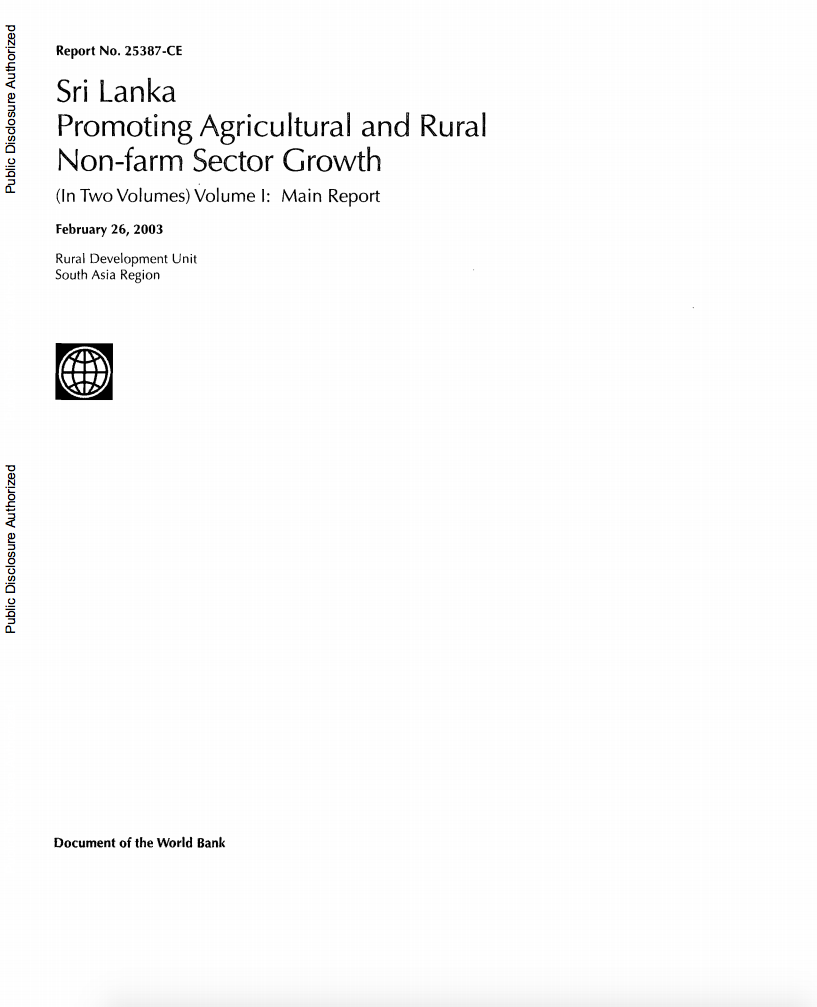The World Bank is a vital source of financial and technical assistance to developing countries around the world. We are not a bank in the ordinary sense but a unique partnership to reduce poverty and support development. The World Bank Group has two ambitious goals: End extreme poverty within a generation and boost shared prosperity.
- To end extreme poverty, the Bank's goal is to decrease the percentage of people living on less than $1.25 a day to no more than 3% by 2030.
- To promote shared prosperity, the goal is to promote income growth of the bottom 40% of the population in each country.
The World Bank Group comprises five institutions managed by their member countries.
The World Bank Group and Land: Working to protect the rights of existing land users and to help secure benefits for smallholder farmers
The World Bank (IBRD and IDA) interacts primarily with governments to increase agricultural productivity, strengthen land tenure policies and improve land governance. More than 90% of the World Bank’s agriculture portfolio focuses on the productivity and access to markets by small holder farmers. Ten percent of our projects focus on the governance of land tenure.
Similarly, investments by the International Finance Corporation (IFC), the World Bank Group’s private sector arm, including those in larger scale enterprises, overwhelmingly support smallholder farmers through improved access to finance, inputs and markets, and as direct suppliers. IFC invests in environmentally and socially sustainable private enterprises in all parts of the value chain (inputs such as irrigation and fertilizers, primary production, processing, transport and storage, traders, and risk management facilities including weather/crop insurance, warehouse financing, etc
For more information, visit the World Bank Group and land and food security (https://www.worldbank.org/en/topic/agriculture/brief/land-and-food-security1
Resources
Displaying 2271 - 2275 of 4907India : Power Supply to Agriculture, Volume 3. Andhra Pradesh Case Study
After almost a decade of high-level
effort to bring the charges (tariffs) that farmers pay for
electricity more nearly into line with the costs of supply,
India has barely made a dent in the longstanding and
increasingly uneconomical practice of subsidizing power to
agricultural consumers for irrigation. Progress has been
slowed by the understandable but misplaced concern that
higher tariffs would harm farmers--and that the injured
Lithuania : Issues in Municipal Finance
Since the establishment of
Lithuania's independence, the country achieved
substantial progress in transforming its local governments
into independent units of Government: structural reforms to
prod intergovernmental relations were made in 1994 and 1997,
and will continue in 2002. Nevertheless, several issues
remain, requiring particular attention from the Government.
First, revenue and expenditure assignment between levels of
Brazil - Poverty Reduction, Growth, and Fiscal Stability in the State of Ceara : A State Economic Memorandum, Volume 2. Annexes
Although the State of Ceara, in Brazil,
is a model of good economic, and fiscal performance given
its poverty status, recent analysis show poverty remains
severe, in spite of significant reductions over the last
decade. The combination of good governance, and sound fiscal
management, industrial promotion, and public investments
have been successful, but the report questions whether
different policies, could have led to higher growth, and
Sri Lanka : Promoting Agricultural and Rural Non-farm Sector Growth, Volume 1. Main Report
Economic development has brought about,
the decline in contribution of the agricultural sector to
the economy of Sri Lanka, and, consistent with this economic
transformation, the structure of employment also changed.
Thus, as labor migrates away from agriculture, the
productivity, for those who remain in the land, needs to
increase significantly. This report examines the constraints
to promoting more rapid agricultural, and rural non-farm
Large Mines and the Community : Socioeconomic and Environmental Effects in Latin America, Canada and Spain
The book examines the impacts of medium-
and large-scale mines on local communities, through six case
studies, analyzing both the socioeconomic and cultural
effects, as well as environmental impacts of mining
operations on the communities. From a multidimensional
perspective, studies investigate mining operations costs,
and benefits, with an emphasis on the sustainability of
benefits, and the outcomes of the legal, and consultative







